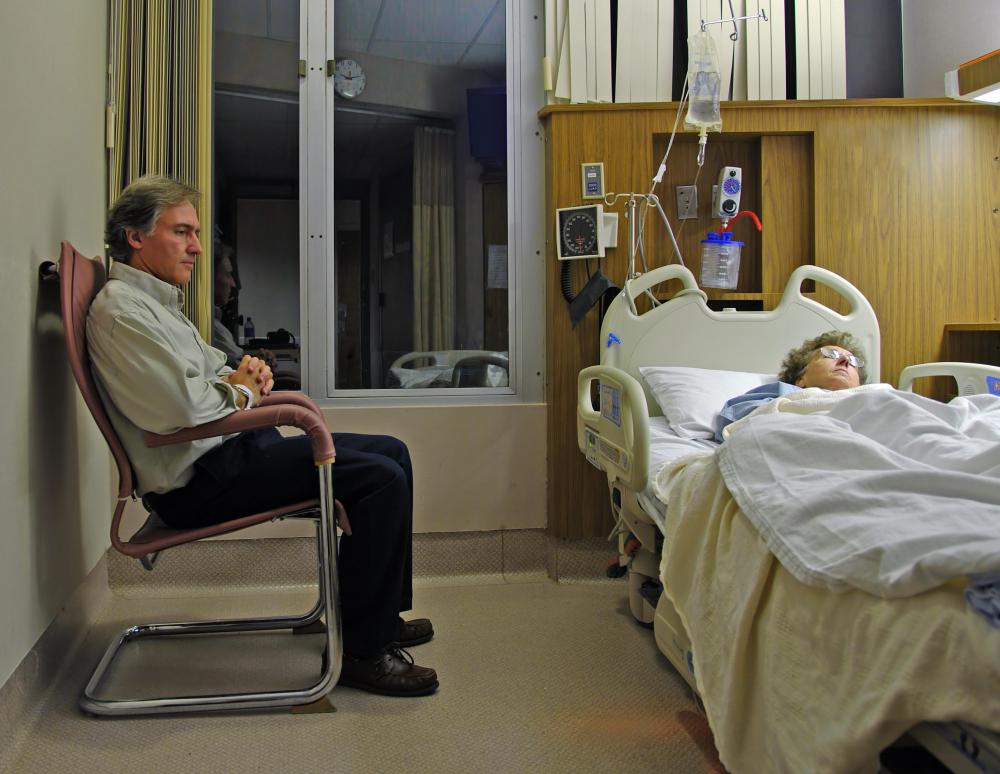At WiseGEEK, we're committed to delivering accurate, trustworthy information. Our expert-authored content is rigorously fact-checked and sourced from credible authorities. Discover how we uphold the highest standards in providing you with reliable knowledge.
What are the Different Cerebral Aneurysm Symptoms?
Cerebral aneurysms occur when blood vessels in the brain weaken and bulge as they fill with blood. Aneurysms can be congenital or acquired later in life due to smoking, drug use, severe head injuries, old age, or a number of other possible causes. Most cerebral aneurysms are small and never cause noticeable symptoms. A large bulge, however, can cause head and eye pain and possibly disrupt vision. Serious problems occur when aneurysms rupture, causing intense headaches, nausea, seizures, coma, or even death if not treated right away.
Specific cerebral aneurysm symptoms depend on the location and size of the ballooning blood vessel. If an unruptured vessel grows large enough to put pressure on nerves and brain tissue, a person can experience chronic head pain in the affected area. The most common unruptured cerebral aneurysm symptoms include pain just above the ears or behind an eye, blurry or double vision, and soreness in the neck. If nerves are compressed, an eyelid may droop or a part of the face may feel tingly or numb.

It is important to visit a doctor or an emergency room when experiencing possible cerebral aneurysm symptoms. A doctor can use x-rays and other imaging scans to identify abnormal blood vessels and predict the likelihood of a rupture. If an aneurysm appears to be stable, a patient may simply need to take pain medications and schedule regular checkups to monitor changes. Quitting smoking, exercising, and maintaining a healthy diet can help reduce the likelihood of a rupture.

Intense, life-threatening cerebral aneurysm symptoms occur when an artery ruptures in the brain. Immediately after a rupture, a person usually develops a debilitating headache, nausea, vomiting, and mental confusion. An individual may also lose feeling in his or her face, torso, or extremities. In addition, ruptured aneurysms in some parts of the brain can cause vision loss and seizures. It is essential to contact emergency medical services when a person displays cerebral aneurysm symptoms to prevent loss of consciousness and death.

Patients who suffer ruptured aneurysms typically need emergency surgery to stop hemorrhaging and prevent coma. A surgeon cuts into the brain and seals off the artery with clamps or stitches. Once bleeding is controlled, a stent may be placed inside the damaged vessel to make sure that it does not rupture again.
Patients who experience cerebral aneurysm symptoms are usually kept in the hospital for several weeks to recover. The outlook depends on the damage caused by the rupture and the effectiveness of surgery. Permanent brain damage or paralysis are possible complications, but most patients are eventually able to return to normal levels of brain functioning and physical activity.
AS FEATURED ON:
AS FEATURED ON:
















Discuss this Article
Post your comments